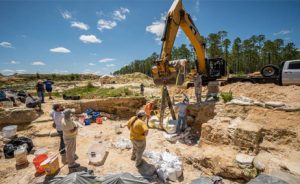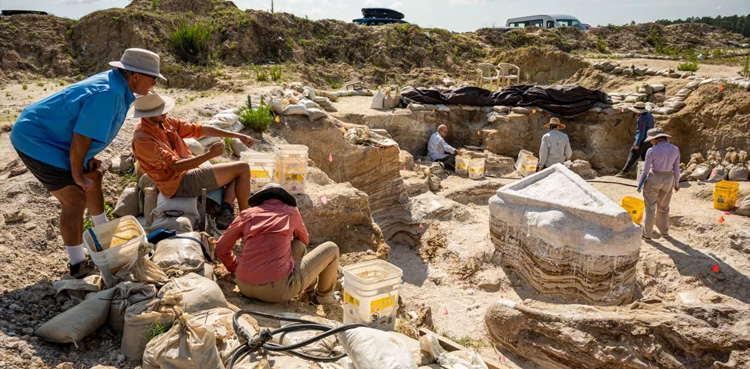A team of researchers and volunteers from the Florida Museum of Natural History has discovered a 55 million year old elephant graveyard in North Florida.
A foreign news agency According to the report It is reported that several complete skeletons of elephants were also discovered on this occasion, which is possibly a major record.
Researchers have also shown the possibility that the animals died at different times, some hundreds of years apart, and their bodies ended up in the same place.


The research team had found parts of the structures at the Montbrook Fossil Dig site before, as isolated bones had been found there in the past, so there was no reason to doubt that there was something unusual here. Is.


Then a few days later the volunteers discovered a giant foot, which research revealed was an ulna and radius belonging to a large animal, and soon they recovered a complete skeleton, the team said. So this was a very interesting discovery.
Scientists Discover 5.5-Million-Year-Old ‘Elephant Graveyard’.#USA #Florida #Sciencehttps://t.co/01OuC0EmNO
— TIMES NOW (@TimesNow) June 4, 2023
However, soon after it became clear to the team members that the dead animal was not alone, the team eventually recovered the complete skeletons of one adult and at least seven juvenile elephants after tireless work.
Officials at the Florida Museum of Natural History say this is the largest and most complete structure found in Florida and North America.
They believe that the skeleton of this adult animal was about 2.4 meters (8 ft) long, with its tusks, and a skull length of more than 2.7 meters (9 ft), about the size of an African elephant.


“Elephants usually travel in herds to protect their young, but I don’t think this was a situation where they all died together,” said Rachel Nardocki, a Florida Museum official. that one or more herds of elephants were stuck at that one place at different times.
Comments
(function(d, s, id) {
var js, fjs = d.getElementsByTagName(s)[0];
if (d.getElementById(id)) return;
js = d.createElement(s); js.id = id;
js.src = “//connect.facebook.net/en_US/sdk.js#xfbml=1&appId=1763457670639747&version=v2.3”;
fjs.parentNode.insertBefore(js, fjs);
}(document, ‘script’, ‘facebook-jssdk’));



